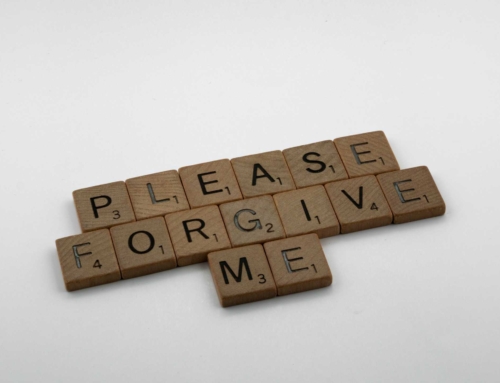 Codependency is a learned behavior that can be unlearned. It is characterized by a pattern of neglecting your own needs and well-being in favor of catering to those of others. You have a need to feel needed that drives you to try and manage their lives and fix their problems to boost your sense of self-worth.
Codependency is a learned behavior that can be unlearned. It is characterized by a pattern of neglecting your own needs and well-being in favor of catering to those of others. You have a need to feel needed that drives you to try and manage their lives and fix their problems to boost your sense of self-worth.
The only person you can now or ever change is yourself. The only person that it is your business to control is yourself. – Melody Beattie
Typically rooted in early childhood, codependency develops as an adaptive coping mechanism. This was formed in response to dysfunctional family dynamics in which your caregivers’ wants and needs overshadowed your own. Your identity was defined by what you did rather than by who you were. Gaining their approval was your only source of validation.
Recovering from codependency involves reversing the dependency process and releasing your need to control others. It is often a long and challenging endeavor that requires patience and mindfulness.
Healing maladaptive behaviors and irrational thoughts that are negatively impacting your self-esteem and ability to enjoy healthy relationships requires new understanding. You can learn the difference between healthy and unhealthy patterns of behavior and learn how to implement healthy ones.
Common codependent tendencies.
- You are obsessed with the problems of other people.
- You think your needs are less important than anyone else’s and feel selfish or guilty when you put yourself first.
- You neglect yourself and commit to doing things you don’t want to do.
- You try to please others at the cost of your individuality and will do anything to make the other person happy.
- You feel attracted to needy people.
- You suffer from low self-esteem and feel unlovable, flawed, and/or undeserving.
- Taking care of others gives you a sense of purpose.
- You feel resentful when your help is not acknowledged or appreciated.
- You feel responsible for other people’s happiness and well-being.
- You don’t ask for help when you need it.
- You tend to worry excessively.
- are afraid of setting boundaries or saying no.
- You tend to stuff your feelings.
- You are often an enabler, doing things for others that they can easily do for themselves.
- You make excuses for the other person’s bad behavior.

Steps to recovering from codependency.
Acknowledge the problem. The first step to recovering from codependency is to step out of denial and acknowledge that you have a problem.
Identify the issue. You can’t change what you don’t see. Before you can unlearn a behavior, you need to be able to identify it. Educate yourself about codependency and the dysfunctional behaviors and relationship dynamics involved, as well as what healthy behavior looks like and what makes healthy relationships healthy. Making a list of codependent behaviors with which you are struggling will make it easier for you to work on changing them.
Understand your actions. Learning to identify the things that trigger unhealthy thoughts, feelings, and choices will help you understand why you act the way you do and enable you to start changing your codependent behaviors.
Dig into your past. Your past hurts do not define you. Look for childhood issues that may be at the root of your codependency, such as lack of communication or physical or emotional neglect. Identifying and reprocessing your story can help you identify the emotional and psychological wounds and challenge mistaken childhood beliefs.
Set realistic goals. Don’t try to fix everything all at once. Start with realistic goals such as changing one or two behaviors at a time and take one step at a time.
Let go of trying to be perfect. Practice being patient and kind to yourself and stay focused on your progress. Be willing to accept your imperfections and forgive yourself for your mistakes.
Establish boundaries. Boundaries help create limits as to what you will and will not do, and how others can treat you. They enable you to enjoy relationships characterized by respect and equality. Without them, you leave yourself vulnerable to being used and/or abused.
 Learn to say no. Be honest about what you can and cannot do and learn to say no without feeling you have to explain your choices.
Learn to say no. Be honest about what you can and cannot do and learn to say no without feeling you have to explain your choices.
Practice self-care. Taking care of yourself is not selfish. Eating nutritious foods, exercising, and getting enough rest are important for your health. It is okay to do things you enjoy as well, and it is also okay to ask for help when you need it.
Let go of what other people are doing. Shift your focus away from the other person’s behavior and onto your own. You are not responsible for anyone else’s feelings or choices. Only God can motivate them to change. The only life you can fix is your own.
Learn to express your feelings. Stuffing down your feelings may result in an unexpected outburst when you least expect it, or in your saying something hurtful that you didn’t mean to say. Learn to communicate your feelings openly and honestly using “I” statements and speaking the truth in love. How you say it can be as important as what you say.
Validate your emotions and trust your instincts. Start trusting yourself and validating your significance and worth. Your feelings, opinions, and needs are important. They matter. Learn how to recognize and challenge erroneous childhood beliefs that are negatively impacting your thoughts about yourself and replace them with healthy ones.
Don’t look to others for validation. You are a unique and precious creation, designed by God in His image (Genesis 1:27, Psalm 139:13). He loves you so much that He sent Jesus to die for your sins, and nothing can separate you from His love (Romans 5:8; 8:38-39, 1 John 4:10). You do not need to look to others for validation. God alone determines your sense of worth.
Build your self-esteem. Get to know yourself and acknowledge your strengths, talents, and abilities. Instead of putting yourself down, practice positive self-talk. Your brain can be reprogrammed by consistently replacing negative thoughts about yourself with positive, uplifting affirmations and Bible truths such as those listed below.
Join a support group. Joining a peer support group such as Co-Dependents Anonymous (CODA), Al-anon, or Celebrate Recovery can offer invaluable support and encouragement, as well as specific tools and principles for recovery.
Seek professional help. Having someone guide you along the way can make the process easier. A trained counselor who specializes in codependency is an impartial third party who can help you pinpoint your codependent behaviors, spot any blind spots, understand what’s at the root of your codependency, and equip you to navigate your way out.
 Some positive affirmations to get you started in recovering from codependency.
Some positive affirmations to get you started in recovering from codependency.
- I am who God says I am.
- I am fearfully and wonderfully made (Psalm 139:14).
- God loved me and chose me even before the beginning of the world (Ephesians 1:4).
- I am God’s masterpiece, created in Christ Jesus to do the things He planned in advance for me to do (Ephesians 2:10).
- I can do all things through Christ who strengthens me (Philippians 4:13).
- God is with me wherever I go (Joshua 1:9).
- God did not give me a spirit of fear, but of power, love, and a sound mind (2 Timothy 1:7).
Christian counseling for codependency.
Christian counseling involves a combination of biblical principles and clinical intervention. If you are struggling with codependency, know that you do not have to walk this journey alone. We would be happy to answer your questions and/or set up an appointment to discuss how we can help you manage the challenges you are facing and walk you through the healing process.
References:Sharon Martin. “27 Signs that You’re Recovering from Codependency.” PsychCentral. June 4, 2020. psychcentral.com/blog/imperfect/2020/06/27-signs-that-you’re-recovering-from-codependency.
Photos:
“Bike Ride”, Courtesy of Everton Vila, Unsplash.com, CC0 License; “Life Ring”, Courtesy of Matthew Waring, Unsplash.com, CC0 License; “Three Stooges”, Courtesy of Dusan Veverkolog, Unsplash.com, CC0 License; “Sunbeams Through the Trees”, Courtesy of Wonderlane, Unsplash.com, CC0 License









